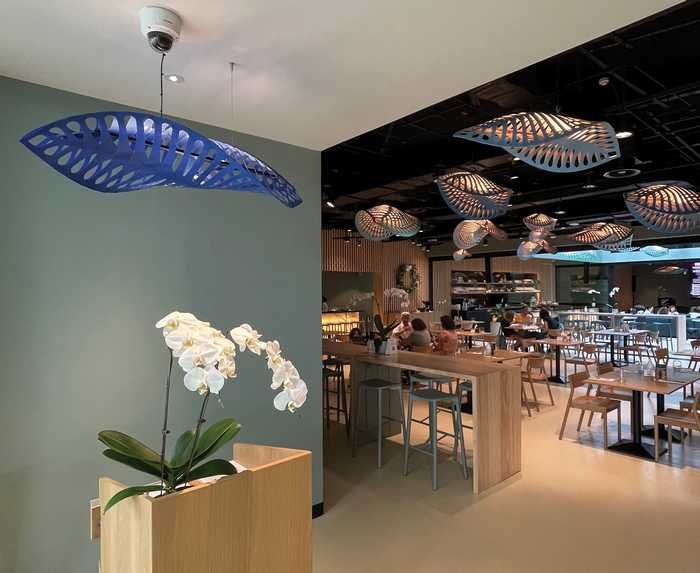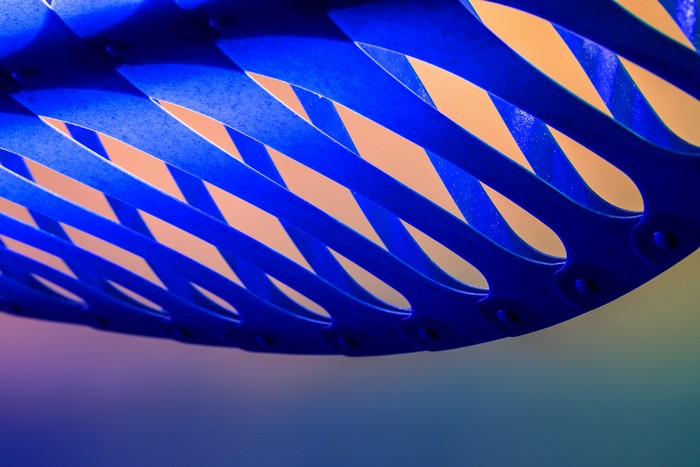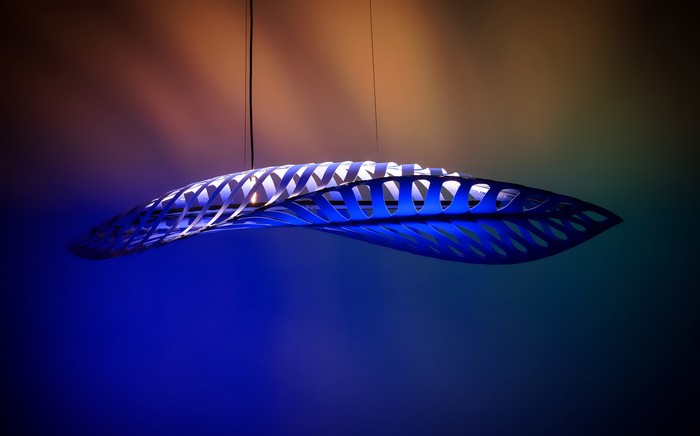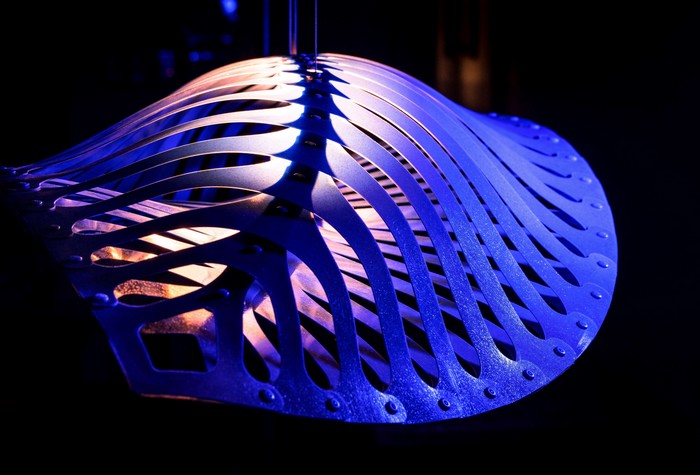A glowing collaboration

The Tiaki restaurant in the New Zealand pavilion at the World Expo in Dubai was adorned with David Trubridge pendant lights earlier this year – one of those being made from a shimmering biomaterial formulation developed by Scion.
Showcasing New Zealand’s innovative and sustainable spirit, the Navicula pendant light featured a composite of sustainable bio-based plastics and native pāua shells developed by Scion scientists, with a beautiful iridescent sparkle.
The Navicula design was inspired by microscopic diatoms which live in water and produce 50 percent of the oxygen in the air we breathe. Designer David Trubridge is a recognised leader in sustainable design for his high-end lighting that is produced with minimal environmental impact.
Trubridge was asked by New Zealand Trade & Enterprise (NZTE) to develop an installation for the World Expo, which ran from October 2021 to March 2022. He created custom colour Navicula pendant lights, with a Scion biomaterial light at the entrance of the Tiaki restaurant reception. Over the course of the World Expo, the restaurant welcomed more than 700,000 visitors.
Trubridge says the main objective of working with Scion was to show what’s possible, and hopefully as the commercial environment changes, to make it more attractive for companies to take up the baton to move away from oil-based plastics.
“Scion has been experimenting with New Zealand materials to make biomaterial colour. They’ve used kiwifruit to make green, harakeke (flax) to make brown, the pāua added more of a glitter effect.
“I love the pāua Navicula pendant light they developed because it’s different – the light shines through, the colour works well. The whole way along we said it’s important to get a texture, as we didn’t want it to have a glossy shine that made it look like plastic. Scion achieved a rough texture which is important – it works really well, it’s quite different to our plywood lights and I like that.”
Scion materials, engineering and manufacturing research group leader Marie Joo Le Guen says it is a fantastic showcase of the utilisation of biomaterials in an everyday product.
“Scion’s mission and vision is transitioning New Zealand from a linear to a circular bioeconomy. To achieve this, working with artists, designers, teachers or educators, is one of the most important parts of our job. It allows us to bring our innovative biomaterials to life, while taking people on the journey.”
Scion’s biomaterials technology platform takes natural fillers, such as sander dust, kiwifruit hair and skin, seashells, grape marc, harakeke, bark or casein and combines them with biobased polymers. Compounding the filler with the polymer creates a biocomposite which is then shaped into a new form that can be used.
“This Navicula pendant project’s success is the result of a 12-year partnership with David Trubridge based on a shared vision towards sustainability and kaitiakitanga,” Le Guen says.
Trubridge adds “it was wonderful to be part of New Zealand’s creative community on exhibit in Dubai – to be there telling the story of our land and our people”.
The Navicula pendant was formulated by Scion’s Marie Joo Le Guen, Jamie Agnew, Maxime Barbier, Regis Risani and Rob Whitton.



